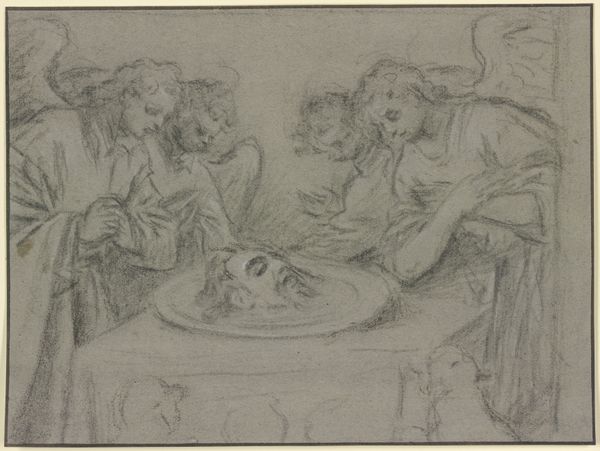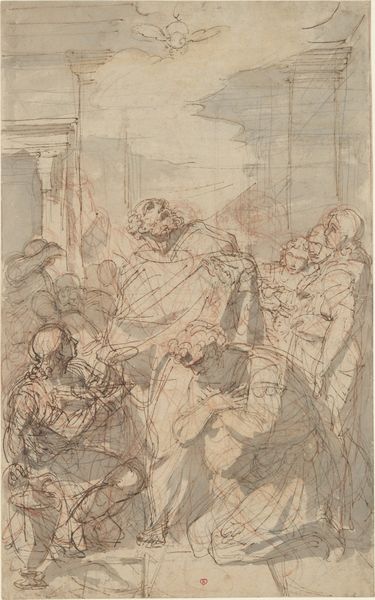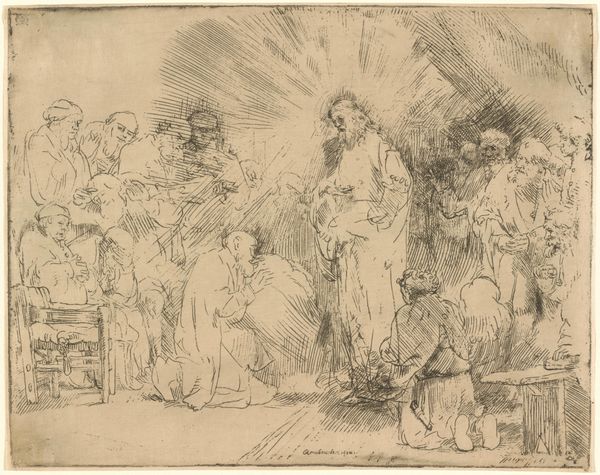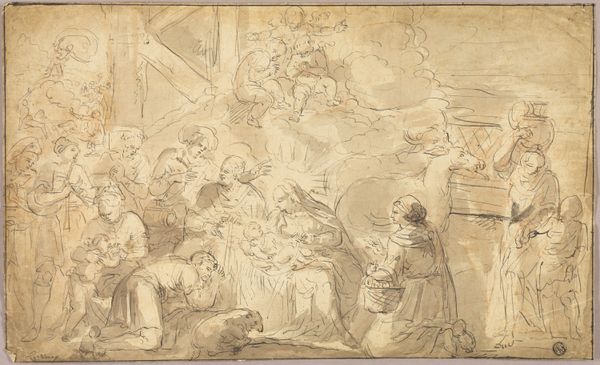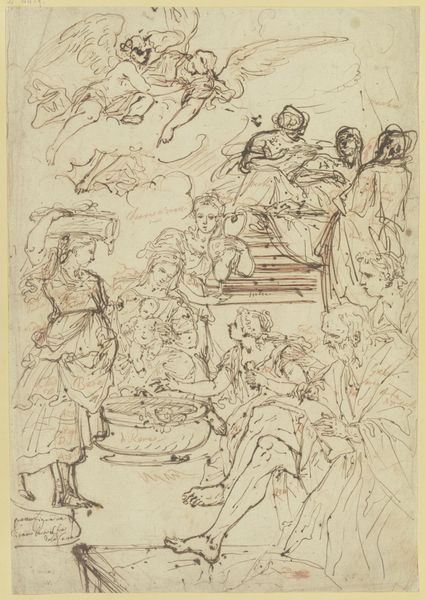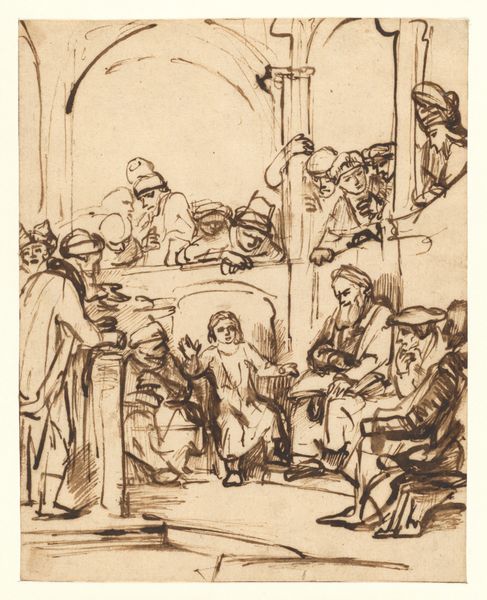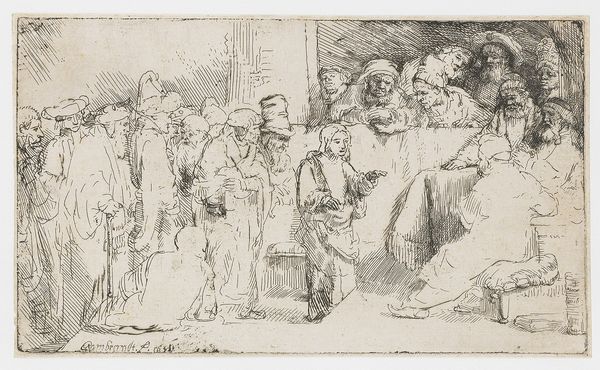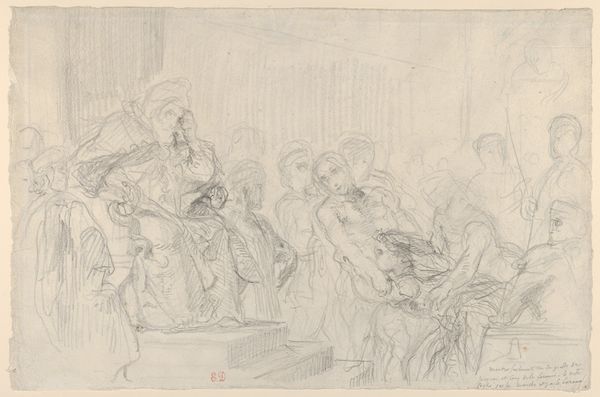
drawing, print, ink, pen
#
drawing
#
narrative-art
#
baroque
#
ink painting
# print
#
figuration
#
ink
#
pen
#
history-painting
Dimensions: sheet: 5 x 6 3/8 in. (12.7 x 16.2 cm)
Copyright: Public Domain
Curator: Let's explore Rudolf Meyer’s "The Denial of St. Peter," created between 1620 and 1638, using pen and ink. I'm curious about how such an intimate medium lends itself to such a loaded narrative. What are your first impressions? Editor: It's smaller than I imagined, but the expressions are so intense! It feels like everyone's caught in a really uncomfortable moment. I’m drawn to the figures clustered together – how would you interpret the expressions and the broader scene? Curator: It's a charged depiction of power and vulnerability. Consider the scene: Peter, denying Christ, is surrounded by figures representing societal authority – soldiers, onlookers. How does Meyer use the physical closeness to comment on Peter’s psychological isolation? Is it only Peter in isolation? Editor: Well, the guards seem to blend into the background like parts of the scene itself. Their expressions feel less personal, less tormented than Peter's or even the woman holding the candle...almost as if only the 'lower' classes feel some measure of empathy here. Is that supported by what we know of the historical context of Meyer's art? Curator: Exactly. Meyer lived through the Reformation, a time of religious and social upheaval. What might this choice of subject matter, and its composition, suggest about Meyer's own stance, or the role of art itself in questioning power dynamics? Do you think he is challenging social stratification and cultural perceptions from a more subjective perspective? Editor: The piece feels relevant even today, thinking about power imbalances and how easily we can deny our own values under pressure. Curator: Absolutely. And perhaps it challenges us to reflect on the insidious nature of power and complicity that perpetuate inequalities, using even our silence. Meyer forces us to confront not just Peter's denial, but our own potential for it. Editor: I hadn't thought about it in terms of complicity before, that definitely gives me a lot to think about. Thanks for this. Curator: My pleasure. It's about considering how these historical narratives continue to resonate and inform our understanding of social structures today.
Comments
No comments
Be the first to comment and join the conversation on the ultimate creative platform.
